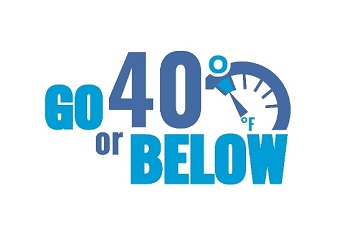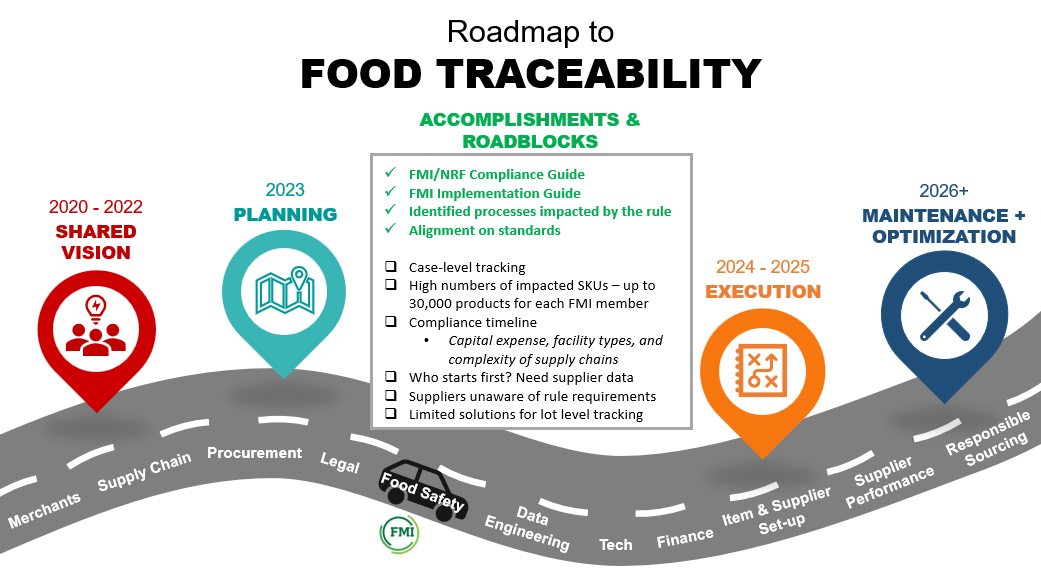By: Hilary Thesmar, PhD, RD, FMI Vice President, Food Safety Programs, Food Marketing Institute

When customers shop in their neighborhood grocery stores, food safety is not necessarily top of mind. Consumer confidence in food retailers remains high and shoppers expect the food they purchase to be safe. When we ask consumers about food safety, they assign the responsibility for food safety to many parties along the supply chain including government organizations, manufacturers, the food stores and themselves as individuals (U.S. Grocery Shopper Trends, 2015). They consider food safety a shared responsibility.
Retailers’ commitment to reducing the risk of foodborne illness expands beyond the store walls into the home of customers. With the support of the FMI Foundation and other industry partners, the nonprofit Partnership for Food Safety Education is introducing a new campaign, GO 40 °F OR BELOW, to call attention to the importance of the home refrigerator in reducing the risk of foodborne illness.
Each year, about 48 million people in the U.S. get sick from eating contaminated food or beverages. The bacteria and viruses that cause the greatest number of illnesses are Salmonella, Campylobacter, and Norovirus. One less common, but often deadly, foodborne bacteria, Listeria monocytogenes can be especially dangerous. The CDC estimates approximately 1,600 illnesses and 260 deaths due to Listeriosis occur annually in the U.S. With GO 40 °F OR BELOW, the Partnership for Food Safety Education aims to change these statistics by empowering consumers with the knowledge and tools to reduce the risk of Listeriosis and other foodborne infections.
Simple solutions like making sure a home refrigerator is set at the right temperature can make a big difference. A risk assessment developed by the U.S. Food and Drug Administration and the U.S. Department of Agriculture found that the predicted number of cases of Listeriosis would be reduced by more than 70 percent if all home refrigerator temperatures did not exceed 41 °F.
Food retailers are committed to healthy, safe food, and also to supporting their customers with the information they need to improve food safety at home. FMI developed a Listeria Action Plan to help food retailers minimize the impact of Listeria monocytogenes at retail. Now grocery stores can help educate shoppers about Listeria by utilizing the GO 40 °F OR BELOW materials. These resources can be used to help educate shoppers about home refrigeration, especially measuring the temperature with a refrigerator thermometer to make sure the temperature of 40 °F or below.
The new campaign also supports consumers with these “cool rules” for reducing risk of foodborne illness:
- Refrigerate or freeze perishables, prepared foods and leftovers within two hours of purchase or use.
- Thaw and marinate food in the refrigerator, not on the counter.
- Separate large amounts of leftovers into small, shallow containers for quicker cooling in the refrigerator.
- Use or discard refrigerated leftovers within 3-4 days.
- Clean up spills in the refrigerator immediately, and regularly clean the inside walls and shelves with hot water and liquid soap.
To keep a food-safe home, consumers are urged to follow the guidance of CLEAN, SEPARATE, COOK and CHILL when preparing food at home. When consumers understand the causes of foodborne illness and how to prevent it, they equip themselves with the right tools to reduce risk to themselves and their families.
To learn more about how you can help shoppers protect themselves from foodborne illness, and to download a GO 40 °F OR BELOW brochure, visit www.fightbac.org.


 Industry Topics address your specific area of expertise with resources, reports, events and more.
Industry Topics address your specific area of expertise with resources, reports, events and more.
 Our Research covers consumer behavior and retail operation benchmarks so you can make informed business decisions.
Our Research covers consumer behavior and retail operation benchmarks so you can make informed business decisions.
 Events and Education including online and in-person help you advance your food retail career.
Events and Education including online and in-person help you advance your food retail career.
 Food Safety training, resources and guidance that help you create a company food safety culture.
Food Safety training, resources and guidance that help you create a company food safety culture.
 Government Affairs work — federal and state — on the latest food industry policy, regulatory and legislative issues.
Government Affairs work — federal and state — on the latest food industry policy, regulatory and legislative issues.
 Get Involved. From industry awards to newsletters and committees, these resources help you take advantage of your membership.
Get Involved. From industry awards to newsletters and committees, these resources help you take advantage of your membership.
 Best practices, guidance documents, infographics, signage and more for the food industry on the COVID-19 pandemic.
Best practices, guidance documents, infographics, signage and more for the food industry on the COVID-19 pandemic.
